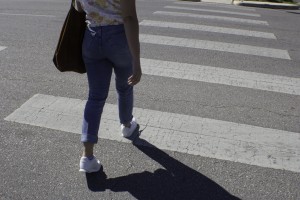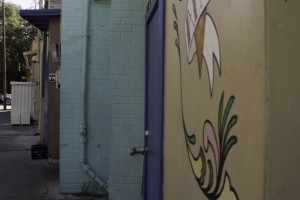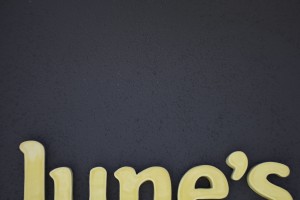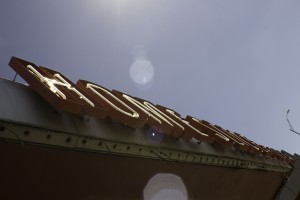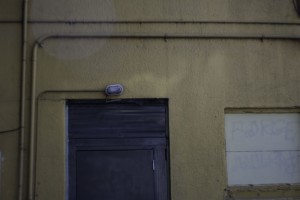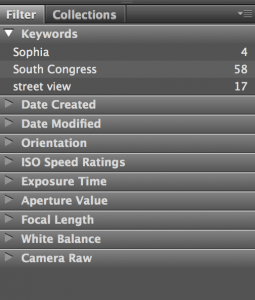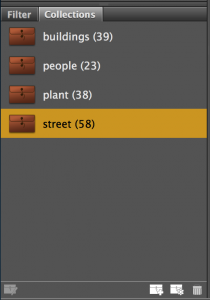As we are reaching the end of the semester, the last project is about sequencing. To aid us in what we want to achieve with our final project, the assigned readings and videos have been about time and sequencing. The first podcast had a lot to do with time and how it can in a way be bended. It was a long podcast but interesting. The idea behind time and the science behind it is just incredible. In a way, it is beautiful. RadioLab had three main topics in “Beyond Time”, one dealing with the melting of metals throughout time and the other with individuals that study and use time the way most don’t. The second assigned post was a TedTalk with a magician who wanted to go against time. It was about his efforts to hold his breath long enough to beat the world record of 16 minutes. With a lot of studying about how we breath and what can be done to make one breath last, he was able to beat the record and start the new one at 17 minutes. All of the people interviewed and that gave a presentation felt so passionately about what they do and how time affects them. I hope to use what I’ve learned from these to successfully execute my idea for the final project and how time can help me.
Author: pmedina1
VISU1311: Creativity Blog #6
For this blog, we were required to watch a film. I chose to watch Memento because the name sounded familiar to me. When I started watching the movie, I realized I have seen it before a long time ago, but it was still nice to watch it again and catch things I didn’t get the first time. The film is about a man who has short term memory loss that is trying to find the person that murdered his wife. The film is directed by Nolan, so one can imagine that there is a twist to the storyline. There are two narratives to the story that go hand-in-hand, one plot going forward while another is going backward and revealing more information to the viewers. By doing this, the viewers get just as confused as the main character, Leonard. The two storylines do harmonize together in the end, but throughout the film, it’s almost frustrating how confusing everything is. The way Nolan chose to tell this story is an interesting idea that works, it keeps the viewers wondering who killed Leonard’s wife and will he find out what the notes he leaves means?
VISU 1311 Project #1: Patricia_Medina
The question for our first project asked was “how do you make an image?” I really took this into consideration while on South Congress trying to figure out what to focus on in my images. Anyone can really take a picture but the most difficult part of it to me is figuring out how to frame the image. That’s what I really played with throughout this project. I tried to have simple subjects but focused on one specific area of what would typically be framed. I stopped at one area on South Congress and took several pictures at different angles and points of view. This caused me to even cut out some of the main subject which can seem unconventional, but I think worked out fine. This helped me incorporate the principles of gestalt for the assignment.
Screen Captures
VISU1311: Creativity Blog #5
The video we were assigned to watch was an interesting interview with Keith Richards, guitarist from Rolling Stones. The interviewer is a pro- guitarist himself so the two had plenty to talk about. It was cool to hear how Richards learned the guitar, as he shares the story about his grandfather getting him into the instrument. Richards also shared with the interviewer and viewers some of his techniques he learned and used for this musical career. This was surprising since the interview in the beginning of the video said that Richards may not even play the guitar at all. The correlation Richards mentioned between the two hands while playing guitar was the most fascinating. Like he said, many people think its the hand on the neck of the guitar that is the most important, but actually the hand strumming the guitar is. As he said, “there are two sides to every story”, and he is right, the hand making the rhythm is just as important as the hand making the chord.
VISU1311: Creativity Blog #4
The work by Marshall McLuhan called, “The Medium is the Massage” along with the audio recording provided, gives the readers an understanding of the viewpoint of media in the lives of people everywhere. The author provides examples in everyday lives where media can effect the individual. These areas include childhood, education, work, and even the people that surround your life. Not only was this an interesting read, but the artwork included in the publication made it more appealing to the eye. Seeing that I am a communication major, I understood most of the effects McLuhan covered in the work. The audio also went along perfectly with the publication. It offered a taste of what was used as examples in the writing. It sounded as though snippets from TV and radio were put together on one file to create this mash up.
VISU1311: Creativity Blog #3
As a communication major, we tend to watch many TedTalks videos but I never had the opportunity to watch one regarding creativity. I did know that I loved the formats of TedTalks videos, and it didn’t matter what the topic was, I always found them interesting. I didn’t have much prior information about Amy Tan, all I knew is that she was a successful writer since I worked at Half Price Books. Tan had an interesting take on how the creative process is formed from her personal experiences. What I admire the most is that she didn’t have a problem with sharing how ideas for books came to her. I do understand that many artists do not share this information and see it as their own secret. Tan was able to use her family life, culture, and tragedies to create her art.
“Stellar” by Stan Brakhage was something that kept my attention. It was so visual appealing even though I did not quite know what I was looking at. It looks almost like the galaxy in rocks. Having no sound I think added more to the film, it demanded all of the attention from the viewer.
The song explorer for Spoon’s “Inside Out” brought the listener through the creative process for music. It was really cool hearing the musicians themselves break down specific parts of the song and where they got the inspiration for that particular sound. Even though outside work from other artists inspired them, like Marvin Gaye for example, they added their own Spoon touch to it. It was nice to hear that music is just a lot of collaborations between musicians and producers to make the final product.
Visu1311: Creativity Blog #2
This week’s articles were very interesting to me. “A Whole New Mind”, by Daniel H. Pink was an article I think I really needed to read. Photography has also been something that has interested me, but it wasn’t until high school when I joined an audio/visual class for three years when I realized I loved creating things. I fell in love with cinematography and how movies are made. Unfortunately, continuing with that as my major wasn’t practical to my parents, so I settled with a communication major and a photo minor. (I would like to say Communication has become so interesting to me and I thoroughly enjoy it.) Reading the article however, gave me reassurance that if I ended up wanting to really pursue a career in the arts, everything could end up alright. From talking to relatives and others, I’ve realized how many people are under the impression that getting an MFA is a dead end that will not get you a career. This article provides the opposite of that, it informs the readers of the possibilities with an MFA in the future, and it looks promising.
Hara’s “What is Design” was good background information to know when continuing studies in art. It provided facts and origins of “design” to the reader. It was quite a long piece filled with information about design in our society throughout the centuries. The author includes popular trends with design like modernism for example, as well as discusses the impact of technological advancement with design. It was a lot of history to retain, but an important part to learn of the creating process for artists.
Visu 1311: Creativity Blog #1
The article, “The Photograph” by Flusser Vilem discusses the technicality of the camera as well as the relationship between the photographer and camera. When it comes to the format in which photographs are created, the author first discusses black and white and how it doesn’t exist. From what I read, Vilem mainly talks about the whole process being theoretical. Many of his points about black and white/color were interesting and the idea that no matter what, the camera is going to capture what it wants to. It’s up to the photographer to work with it and create something his or her own. While reading some parts of the article, I did get lost and not understand what was being said completely. The discussion in class helped me figure out what exactly the article was referring to in some instances. Overall it is an interesting piece that made me appreciate what happens between a camera and a photographer even more.
Hello world!
Welcome to your brand new blog at St. Edwards University Sites.
To get started, simply log in, edit or delete this post and check out all the other options available to you.
For assistance, visit our comprehensive support site, check out our Edublogs User Guide guide or stop by The Edublogs Forums to chat with other edubloggers.
You can also subscribe to our brilliant free publication, The Edublogger, which is jammed with helpful tips, ideas and more.

